Macrolides
Macrolides is a kind of weakly basic antibiotics, which comes from the streptomyces and is named because its molecule contains a fourteen or sixteen membered macrocyclic lactone structure. This kind of antibiotics is a long-term inhibitory agent, which effects on the bacterial ribosomes 50 S subunit to obstruct the bacterial protein synthesis. This class of drugs has similar antibacterial spectrum and antibacterial activity, mainly including Gram-positive bacteria, Legionella, Chlamydia, mycoplasma and anaerobes.
The main indications for macrolides contain:
1. various infections caused by the penicillin-resistant Gram-positive cocci (especially Staphylococcus).
2. Legionnaires' disease.
3. Mycoplasma infection.
4. Chlamydia infection.
5. pertussis.
6. diphtheria carriers.
7. the prophylaxis of rheumatic fever and endocarditis for the patients allergic to penicillin. It is particularly appropriate to take them orally for the mild to moderate respiratory infections patients.
The dverse reactions of this class of drugs is as follows:
1. liver toxicity: the performance mainly shows as the cholestasis, elevated liver enzymes, etc., and can generally recover after the withdrawal.
2. tinnitus and hearing disorders: it occurs in the process of intravenous administration and recover after withdrawal or reduction.
3. Allergies: the performance mainly shows as drug fever, rash, and urticaria.
4. Local irritation: The injection can cause local irritation, so this class of drugs should not be used intramuscularly. Infusion can cause phlebitis, so it should dilute (<0.1%), when used, and drip rate should not be too fast.
- Structure:
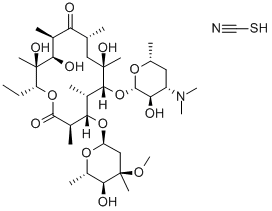
- Chemical Name:Erythromycin thiocyanate
- CAS:7704-67-8
- MF:C38H68N2O13S
- Structure:
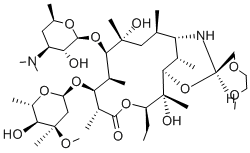
- Chemical Name:Dirithromycin
- CAS:62013-04-1
- MF:C42H78N2O14
- Structure:
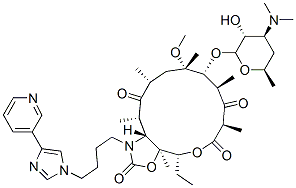
- Chemical Name:Telithromycin
- CAS:191114-48-4
- MF:C43H65N5O10
- Structure:
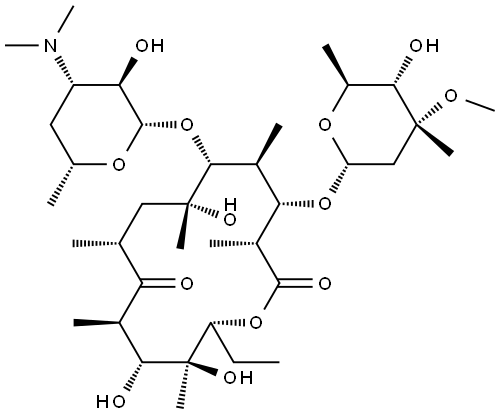
- Chemical Name:Erythromycin
- CAS:114-07-8
- MF:C37H67NO13
- Structure:
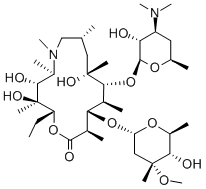
- Chemical Name:Azithromycin
- CAS:83905-01-5
- MF:C38H72N2O12
- Structure:
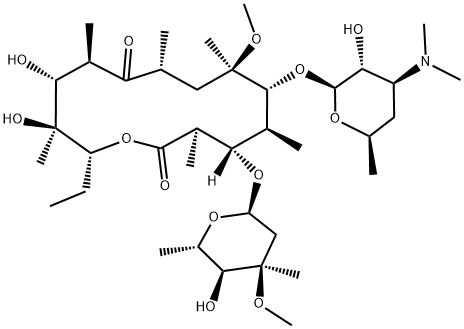
- Chemical Name:Clarithromycin
- CAS:81103-11-9
- MF:C38H69NO13
- Structure:
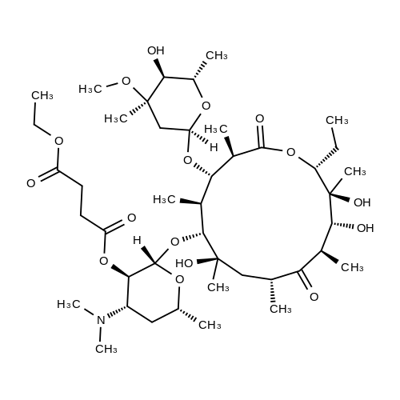
- Chemical Name:Erythromycin ethylsuccinate
- CAS:1264-62-6
- MF:C43H75NO16
- Structure:
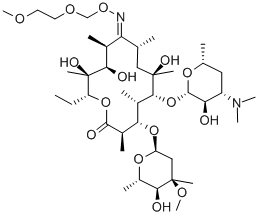
- Chemical Name:Roxithromycin
- CAS:80214-83-1
- MF:C41H76N2O15
- Structure:
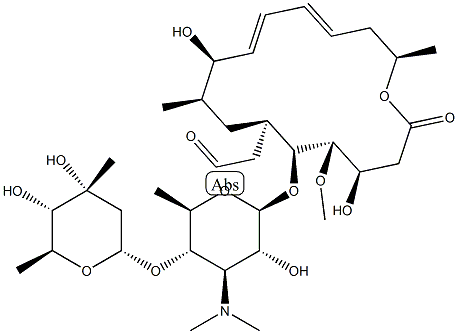
- Chemical Name:Sineptina
- CAS:1392-21-8
- MF:C35H59NO13
- Structure:
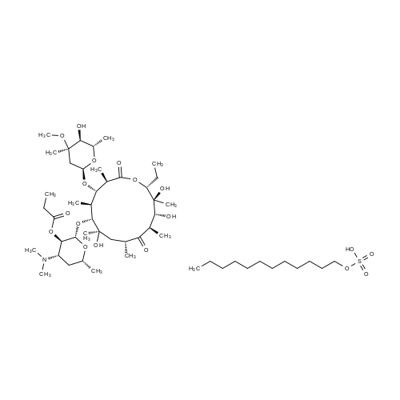
- Chemical Name:Erythromycin Estolate
- CAS:3521-62-8
- MF:C52H97NO18S
- Structure:
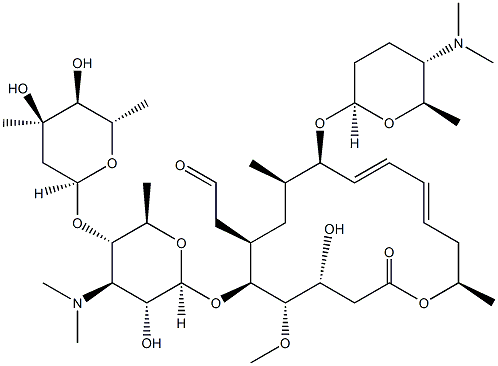
- Chemical Name:Spiramycin
- CAS:8025-81-8
- MF:C43H74N2O14
- Structure:
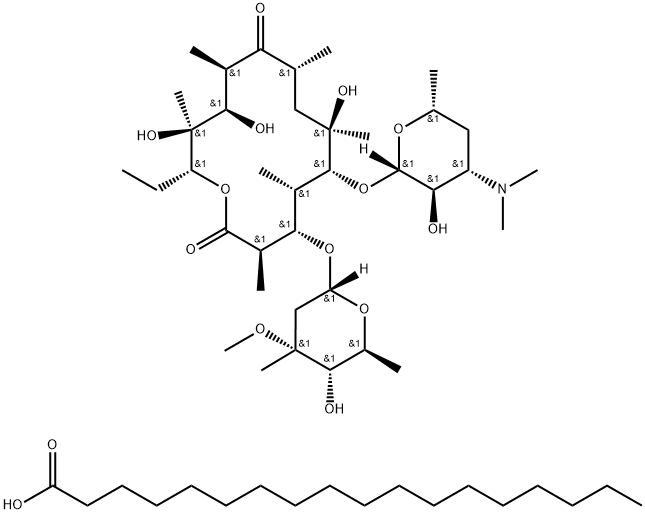
- Chemical Name:Erythromycin stearate
- CAS:643-22-1
- MF:C55H103NO15
- Structure:
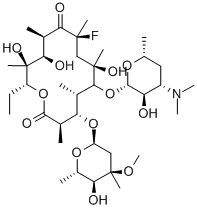
- Chemical Name:FLURITHROMYCIN
- CAS:82664-20-8
- MF:C37H66FNO13
- Chemical Name:Kitasamycin tartrate
- CAS:37280-56-1
- MF:C40H67NO18
- Structure:
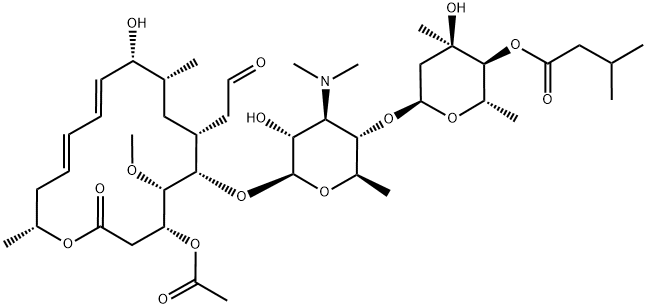
- Chemical Name:Josamycin
- CAS:16846-24-5
- MF:C42H69NO15
- Structure:
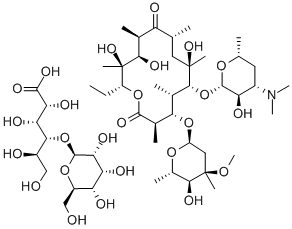
- Chemical Name:ERYTHROMYCIN LACTOBIONATE (200 MG)
- CAS:3847-29-8
- MF:C37H67NO13.C12H22O12
- Structure:
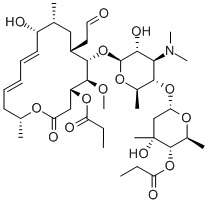
- Chemical Name:MIDECAMYCIN
- CAS:35457-80-8
- MF:C41H67NO15
- Structure:
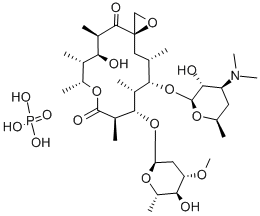
- Chemical Name:OLEANDOMYCIN PHOSPHATE
- CAS:7060-74-4
- MF:C35H64NO16P
- Structure:
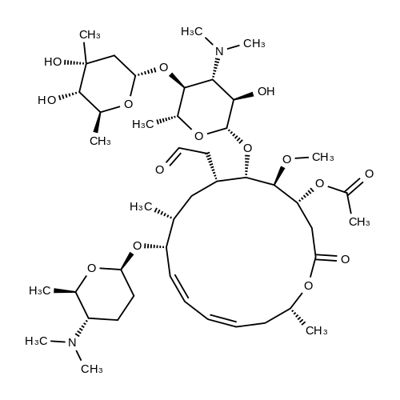
- Chemical Name:Acetylspiramycin
- CAS:24916-51-6
- MF:C45H76N2O15
- Chemical Name:ERYTHROMYCIN B
- CAS:
- MF:
- Structure:
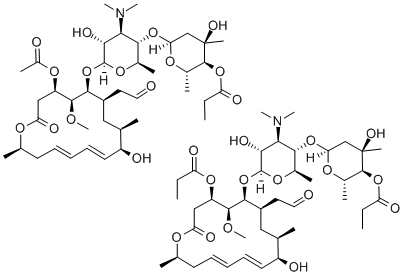
- Chemical Name:MELEUMYCIN
- CAS:149370-53-6
- MF:C41H67NO15.C40H65NO15
- Structure:
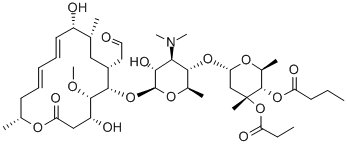
- Chemical Name:ROKITAMYCIN
- CAS:74014-51-0
- MF:C42H69NO15
- Chemical Name:MELEUMYCINUM
- CAS:
- MF:
- Chemical Name:Azithromycin aspartate
- CAS:
- MF:
- Structure:
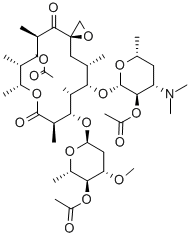
- Chemical Name:TROLEANDOMYCIN
- CAS:2751-09-9
- MF:C41H67NO15
- Structure:
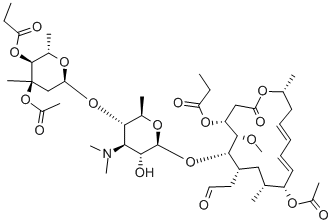
- Chemical Name:Midecamycin Acetate
- CAS:55881-07-7
- MF:C45H71NO17
- Chemical Name:ALBOMYCIN
- CAS:1414-39-7
- MF:C36H55FeN10O18S